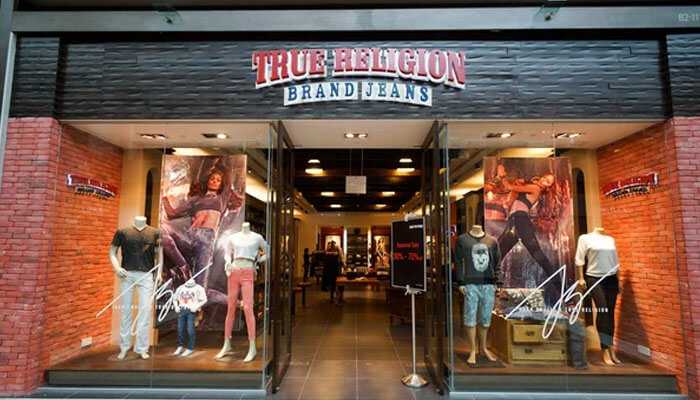Introduction
True Religion, the enduring fashion brand famed for its maximalist style and Y2K-stimulated designs, now stands at a critical juncture, faced with a pivotal decision that might form its destiny. With the worldwide resurgence of Y2K style trends that have captivated the creativeness of consumers worldwide, the enterprise finds itself carefully considering the ability opportunity of a sale as a part of its complete strategic assessment.
This large step comes as the retail landscape undergoes a great transformation, pushed by way of nostalgia-pushed aesthetics and ever-evolving patron possibilities that continue to redefine and reshape the style industry. Thus, True Religion must navigate this dynamic environment and make a choice that aligns with its longstanding heritage and dedication to style innovation.
The Growth of True Religion
Founded in 2002 with the aid of entrepreneur Jeff Lubell, True Religion unexpectedly rose to prominence via its daring denim creations, providing the iconic horseshoe emblem. With an emphasis on extravagant, eye-catching style, the brand flawlessly encapsulated the maximalist mindset widely spread during the early 2000s.
True Religion’s first-rate triumphs can largely be attributed to its innate ability to seize the essence of the cultural spirit of the time, positioning itself as a logo of status and fashion, each amongst renowned celebrities and passionate fashion aficionados. The logo’s overwhelming achievement stems from its eager awareness of the ever-evolving zeitgeist, ensuring that it remains a coveted image of fame and trendiness over the years.
Obstacles in the Modern Retail Environment
However, as style tastes developed and consumer conduct shifted, True Religion encountered several challenges that put its resilience to the test. The rise of speedy style, which delivered low-cost ultra-modern garb, proved to be an impressive obstacle for True Religion’s traditional business model. Additionally, the appearance of e-commerce supplied a new realm of opposition and patron accessibility that the brand had to navigate.
Furthermore, converting perceptions of luxury, with a focus on sustainability and moral manufacturing, demanded that True Religion adapt its services and techniques for that reason. Determined to live and meet the demands of cutting-edge clients, True Religion embarked on a comprehensive journey of reinvention.
By reevaluating its designs, embracing sustainable practices, and incorporating technology into its business operations, the brand sought to realign itself with cutting-edge traits. Through this strategic trade, True Religion aimed to seize the eye and loyalty of a brand-new technology of favor enthusiasts.
Examining the Strategic Alternatives
The current resurgence of Y2K fashion has offered True Religion new and giant opportunities as well as unprecedentedly demanding situations. On one hand, the renewed interest in nostalgic, maximalist aesthetics has undeniably rekindled a superb fervor amongst clients, who are eagerly embracing the emblem’s signature patterns.

This heightened competition has pressured True Religion to double down on their efforts, further solidifying the need for a complete assessment of strategic options to ensure their perseverance. As a result, they’ve begun exploring the opportunity of a sale as one of the potential paths ahead, in the hopes of strengthening their position and capitalizing on the lucrative potential of this resurgence.
Navigating the Sale Process
The choice to discover a sale is a sizable one, with far-achieving implications for True Religion and its stakeholders. A hit sale could provide the company with the necessary assets and expertise to revitalize its brand, increase its attainment, and capitalize on rising opportunities in the ever-evolving fashion landscape.
This might allow True Religion to attract new clients, penetrate untapped markets, and stay ahead of its competitors. However, the sale technique involves careful consideration of various factors, which include valuation, the ability of customers, and ensuring the strategic goals of the company align with those of the possible consumer.
Impact on True Religion’s Future
Regardless of the outcome of its strategic evaluation, True Religion remains devoted to upholding its core values and heritage. The emblem’s legacy of unheard craftsmanship, creativity, and individuality keeps striking a chord with a diverse audience in search of authentic and expressive style reports. Whether through a sale, a partnership, or other strategic initiatives, True Religion seeks to chart a course that guarantees its persistent relevance and fulfillment in an industry that demands version and ahead-wondering.
By embracing alternate, True Religion seeks to leverage its established brand equity to explore new avenues for increase, set up strategic alliances, and stay at the vanguard of favor traits and patron choices to elevate its positioning in the enterprise. Through this, True Religion endeavors to no longer only safeguard its legacy but also to create new opportunities for enlargement, innovation, and brand reinforcement.
Conclusion
As True Religion deliberates on the ability option of a sale, given the renewed recognition of maximalist, Y2K-stimulated style, the employer discovers itself at an honestly widespread second in its ongoing development and progress. With a sensitive balancing act between honoring its wealthy heritage and embracing modern strategies, in addition to hanging a chord among sentimental longing and present-day relevance, True Religion endeavors to skillfully navigate the elaborate facets of the cutting-edge retail panorama while assertively upholding its popularity as a style pioneer.
Regardless of the precise course that the agency in the end takes, one plain truth stays steadfast: True Religion’s journey continues to unfold, and its impact on the fashion enterprise will undoubtedly endure for years yet to come. The brand’s legacy and impact are poised to leave an indelible mark, shaping trends and provoking style fans around the world with its distinct fashion and imaginative and prescient style. Thus, as True Religion unfolds its next bankruptcy, the potentialities for its future are both unpredictable and promising, fueling anticipation for what lies ahead and the interesting contributions the emblem will make to the vibrant international community of favor.


